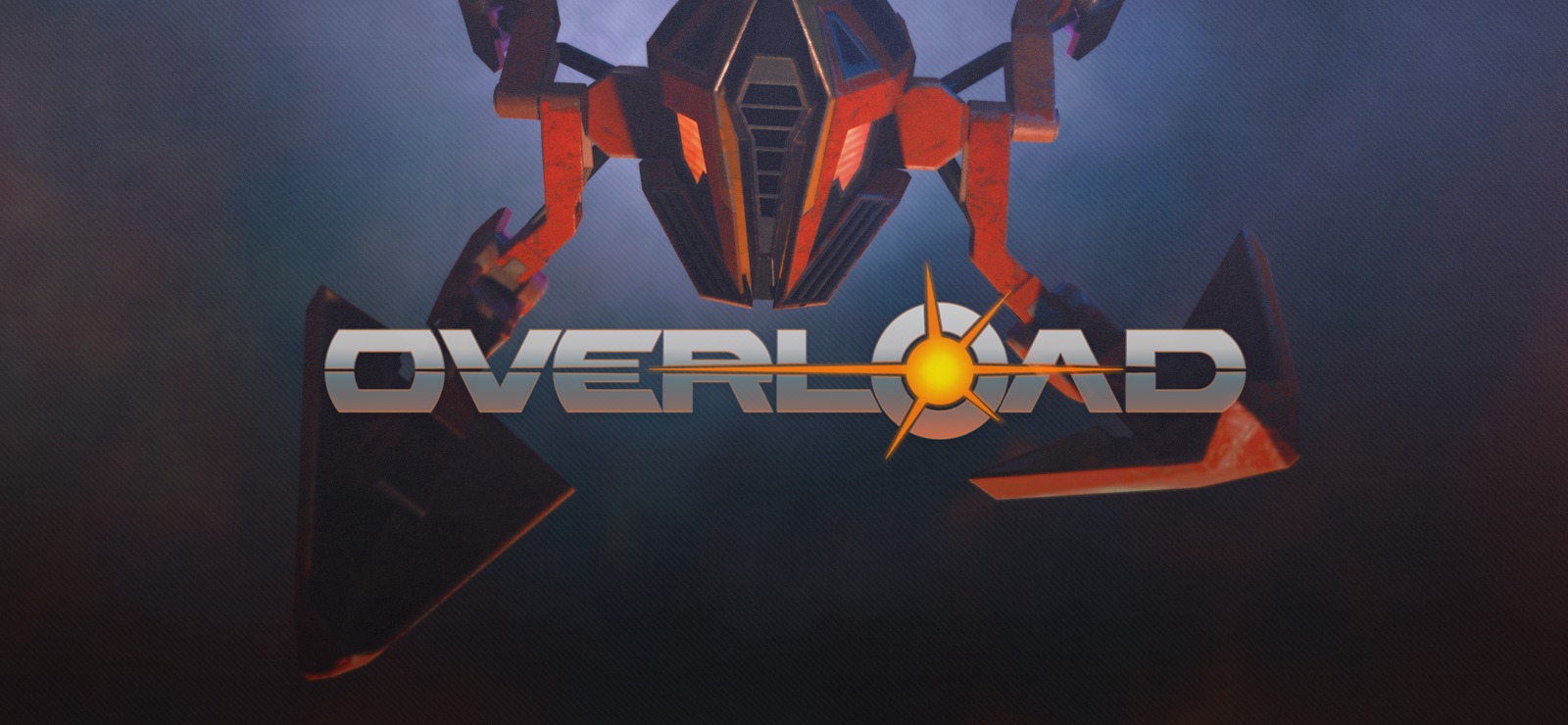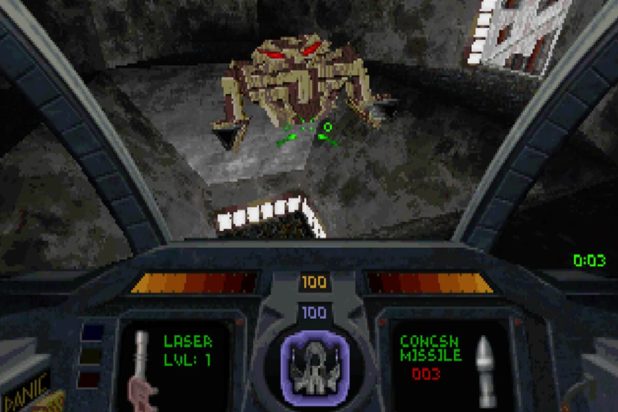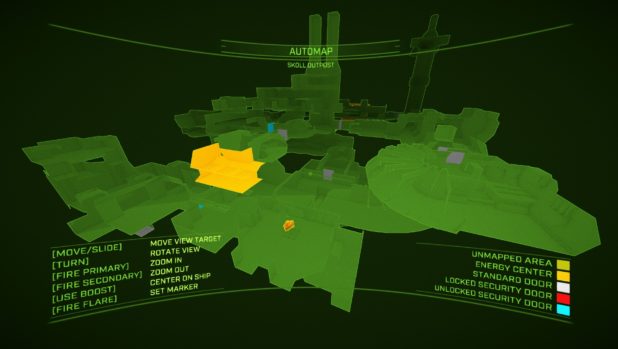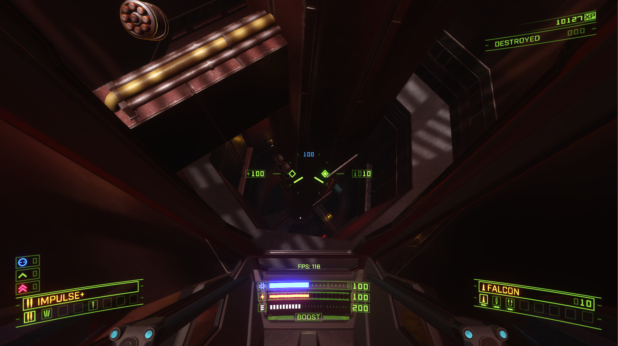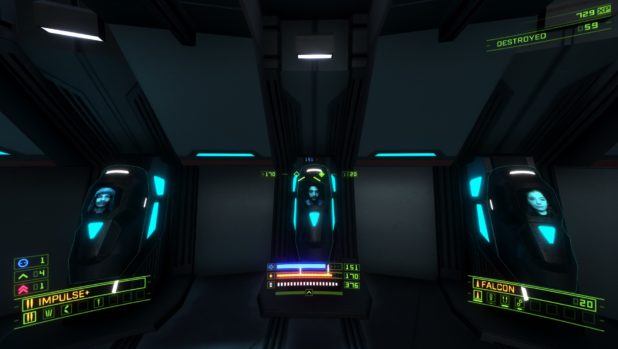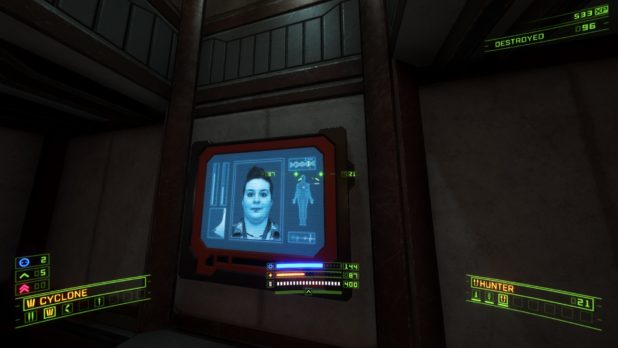Adrian Sol
Daily Stormer
June 11, 2018
This is eerily familiar…
The danger with “retro remakes” these days is that developers often just apply a retro coat of paint over ill-fitting modern game design. This is why a lot of people panned Duke Nukem Forever, with its regenerating health, checkpoints and limited weapon slots.
In spite of this, a lot of people still crave these older franchises who date from the time before everything was pozzed to all hell. So they got churned out regularly, often not being very good.
But then Doom 2016 came along, and showed the world how it’s done. Fast combat, open large levels that demand exploration, no pointless story and dialogue, but executed with great production values and tight game feel. In other words, the spirit of the original with modern technology.
Overload is a remake of Descent very much in the same vein as Doom 2016. And that’s a very, very good thing.
Descent was freaking awesome.
Descent was a first person shooter that gave you full, 6-axis control over a ship as you navigate complex, maze-like levels and fight armies of robots coming at you from every direction. There was nothing quite like it these days – until Overload came along.
Made by a lot of the same people who developed the original Descent, Overload is a spiritual successor which aims to capture the same gameplay while updating the presentation to modern standards, and it mostly works very well.

If you’ve never played Descent, then you haven’t experienced anything quite like this.
The levels are labyrinthine and non-linear, consisting of branching paths, bigger rooms with multiple exits and hosts of secret passages leading to various pickups and upgrades. Exploring the levels is at least half of the gameplay, and while it’s very easy to get lost, the game provides two great tools to find your way around.
First is a very good automap system.
The automap seems to be a 1:1 representation of the level geometry – including secret areas. So a careful exploration of this screen will be immensely helpful in finding your way around and getting as many secrets as possible.
This was enough for me.
However, like the original Descent, Overload also provides a “guide” that can show you the way to your next objectives. This is accessible at the press of a button, and takes the form of a little holographic robot that flies out in front of you, patiently waiting for you and even coming back to fetch you if you fail to follow it.
So for those who don’t have the best sense of direction, using this feature could be a lifesaver. Especially since these levels are the most “3d” you’ve likely ever seen in a video game. Doors and passages can be found on the floors and ceilings as well as the walls. Often, you’ll have to completely change your orientation as you move from area to area to better navigate the new, complex geometries of each room.
I hope you don’t easily get queasy, because this is one disorienting game.
But actually navigating the levels is a pleasure, since the controls are smooth and responsive. I’ve played with a PS3 gamepad connected to my PC, and the default mappings were very workable. Mouse and keyboard controls are equally well implemented.
But getting used to constantly having 6 degrees of freedom does take a little while. And while the early levels are fairly forgiving, the game will quickly start expecting you to dodging incoming fire from multiple direction while weaving around the tight level geometry.
Yeah, the game is quite hard. Enemies pack quite a wallop – if you let a few robots concentrate their fire on you for just a few seconds, you’re a goner. Luckily, pretty much everything enemies throw at you can be dodged or otherwise avoided if you’re skilled enough. And when things start to click and you’re dancing around, dodging missiles and laser blasts by the skin of your teeth, it feels great.
The combat is very fast pace, as most enemies are not bullet sponges, and you always have more powerful weapons to deal with tougher enemies. So combat is mostly about eliminating enemies quickly while dodging incoming fire and navigating the environment.

On thing I’m not too fond of, however, is the occasional use of “jump scares.” Basically, you pick up an item, and a bunch of monsters spawn directly behind you and attack immediately. IMO, that’s just bullshit, I’m sorry. Luckily, it doesn’t happen too often.
But the overall gameplay shows clear inspiration from Doom 2016, right down to small but welcome touches, such as the slowdown effect when selecting weapons. You’re incentivized to explore levels with upgrade points scattered in various secret locations. Enemies drop health and ammo to force you to deal with enemies aggressively in order to stay in the game. The story is entirely optional and never gets in the way.
The game is brought to life with some sharp and pleasing visuals, which are definitely easy on the eyes. But you have to adjust your expectations – the levels are very simple in terms of details. Their mostly simple geometry is coupled with nice textures, but you don’t have a AAA level of detail and polish bringing these mines and space stations to life.
On the other hand, the combat effects and animations are definitely top tier. The weapons pack a great punch, and blowing up the enemy robots feels just as satisfying as it should.

You’ll also be delighted by the music, which is definitely a throwback to 90s synthwave tracks. Allister Mark Brimble is the composer, returning from the original Descent.
Oh, yeah. I’m ready to blast some robots now.
The sound effects for the enemy robots also deserve special mention. Instead of generic robotic sounds, they gave them these incredibly creepy monstrous roars, evoking goblins or ogres rather than mining machinery. Each enemy type has it’s own sounds, too, making it easy to recognize the opposition by sound alone.
POZ factor
So, the great question: how pozzed is it?
Thankfully, very little. But it’s my duty to inform you of every little bit I find. The story in the game takes a complete backseat, being relayed through scattered audio logs. The gist of it is that some scientist in charge of deep space mining colonies is trying to cut ties with the corporation which owns said colonies, so that he might use them for his own mysterious purposes.
You’re an agent of the corporation sent to save the survivors in each station and basically wreck everything in sight.
Frankly, the only annoying stuff I could find is that among the surviving “engineers” you have to rescue are some women and non-Whites.
They’re in cryogenic tubes. Also, you don’t actually have to rescue them, lol.
Similarly, you sometimes have panels on the walls listing employees, and those include women for whatever reason.
Yeah, I’m sure fat women will be lining up to go work in mines in the outer solar system.
But these are background elements you’re unlikely to even notice unless you’re paying close attention.
So I’ll give this one a POZ rating of 1/10.
Overall
If you’re a fan of tough, old-school shooting games with tight single-player campaigns, Overload will be a welcome change of pace from the endless slew of generic FPS games being released these days. The campaign should last you anywhere from 8 to 15 hours, and you can always attempt it on higher difficulty levels once you’re done.
The game also features a simple but enjoyable arcade mode, which puts you in small arenas flooded with wave after wave of enemies, and logs your high scores.
While there are some multiplayer deathmatch-type game modes, there’s unfortunately no cooperative gameplay. I haven’t played any multiplayer, and thus can’t comment on that aspect of the game, but this is definitely a single-player focused experience in any case.
For the current price of $30 on steam, it’s definitely worth checking out.
